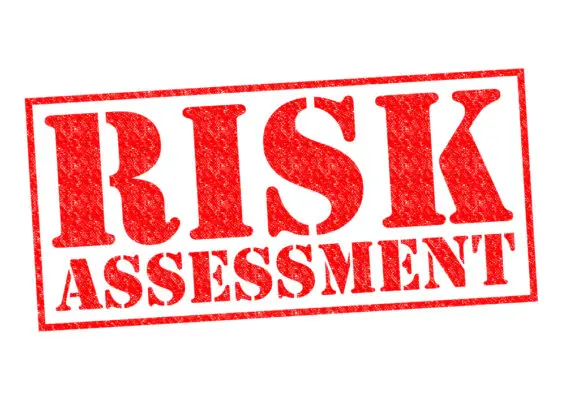In the complex and ever-evolving world of finance, assessing risk exposure is a critical component for broker-dealers. Broker-dealer firms must employ effective risk assessment processes to ensure compliance with regulatory requirements and mitigate potential risks.
This article aims to provide an in-depth analysis of the broker-dealer risk assessment template, a comprehensive tool for evaluating various risk factors these entities face.
Adopting a systematic approach to risk assessment, broker-dealers can identify and address vulnerabilities in their operations, thereby safeguarding their financial stability and reputation.
The template encompasses the evaluation of different aspects such as market risks, credit risks, operational risks, and liquidity risks. It also considers the regulatory environment to ensure adherence to laws and regulations governing the securities industry.
This article will give readers insight into the significance of implementing a robust risk assessment framework within broker-dealer organizations.

Overview
This will show the purpose of a broker-dealer risk assessment template.
A broker-dealer risk assessment template aims to evaluate and analyze the risks associated with operating as a broker-dealer.
It provides a structured framework for identifying potential risks, assessing their severity and likelihood, and developing appropriate risk mitigation strategies.
This template enables organizations to systematically identify and address potential vulnerabilities in their operations, ensuring compliance with regulatory requirements and safeguarding the financial well-being of the firm and its clients.
Purpose
The broker-dealer risk assessment template aims to provide an objective and comprehensive analysis of potential risks involved in the operations of a brokerage firm, enhancing transparency and aiding in informed decision-making.
This template systematically evaluates various aspects, such as financial statements, risk assessment programs, operational risks, regulatory filings, compliance programs, risk concentration, and regulatory authority requirements.
Utilizing this template, broker-dealers can accurately identify and assess their risk profile.
The risk assessment involves reviewing internal controls and procedures to ensure adequate risk management practices.
It also helps broker-dealers identify gaps or vulnerabilities within their operations that could expose them to financial losses or reputational damage.
Using this template strengthens overall risk management capabilities within the brokerage industry.
Regulatory Environment
The regulatory environment for broker-dealers is overseen by federal agencies, which ensure compliance with regulations and protect investors.
Broker-dealers must submit regulatory filings and reports to provide transparency and accountability in their operations.
Anti-money laundering program requirements, supervisory procedures, compliance programs, and customer identification programs (CIP) are key components of the regulatory framework that aim to prevent fraud, money laundering, and other illicit activities within the industry.
Federal Agency Oversight
Federal Agency Oversight plays a crucial role in regulating and supervising broker-dealers, ensuring that they adhere to industry standards and operate with integrity, thus instilling confidence in investors.
The oversight is primarily conducted by the Securities and Exchange Commission (SEC), which has the authority to enforce securities laws and regulations.
The SEC conducts broker-dealer examinations to evaluate compliance with regulatory requirements, including risk management practices, financial conditions, and customer protection measures.
In addition to the SEC, other federal agencies, such as the Financial Industry Regulatory Authority (FINRA), oversee broker-dealers. These agencies collaborate through regular communication and information sharing to identify potential risks or noncompliant reporting by broker-dealers.
Furthermore, federal agency oversight extends beyond individual broker-dealers, including affiliated and additional broker-dealers and exempt clearing agencies.
When deficiencies or violations are identified during examinations or investigations, federal agencies may take enforcement actions or issue agency comments outlining required corrective actions for improved compliance.
Such oversight ensures that broker-dealers operate within legal boundaries while protecting investor interests and maintaining market stability.
Regulatory Filings and Reports
Regulatory filings and reports are essential tools for monitoring the compliance and financial performance of broker-dealers. These filings serve as a means to ensure regulatory compliance by providing transparency into the operations of broker-dealers.
Annual reports offer a comprehensive overview of a firm’s financial standing, including its balance sheet, income statement, and cash flow statement. Quarterly reports provide more frequent updates on a firm’s financial performance.
Additionally, regulatory reports such as suspicious activity reports (SARs) help identify potential money laundering or fraud activities within the industry. Customer complaints filed with regulatory agencies offer insights into clients’ issues and highlight areas that may require improvement.
Senior management should carefully review these filings and reports to address any concerns promptly. Furthermore, maintaining accurate record-keeping is crucial for legal compliance and effective risk management in the face of potential financial difficulties.
Anti-Money Laundering Program Requirements
To comply with anti-money laundering regulations, broker-dealers must establish and maintain an effective program that includes written policies and procedures, ongoing employee training, independent audits, and appointing a designated compliance officer.
This program should address various aspects such as customer identification programs, recordkeeping requirements, and retention of records.
Broker-dealers must conduct a risk assessment to identify potential risks associated with money laundering activities.
The program should also include mechanisms to detect and report suspicious transactions that may indicate a violation of law or involve illicit funds.
Additionally, the program should address transaction-relevant cybersecurity risk management rules to safeguard against cyber threats.
By implementing an anti-money laundering program that covers these areas comprehensively, broker-dealers can effectively mitigate the risks associated with money laundering activities.

Supervisory Procedures and Compliance Programs
Supervisory procedures and compliance programs are essential in maintaining financial systems’ integrity and fostering public trust. These measures ensure that broker-dealers adhere to regulatory requirements while minimizing risk.
Implementing robust supervisory procedures enables firms to monitor their operations and effectively detect potential violations or misconduct.
Compliance programs, on the other hand, establish a framework for identifying and addressing risks within the organization. This includes conducting regular risk assessments, annual reviews, and comprehensive record-keeping practices.
Additionally, training programs are vital for educating staff members about compliance obligations and promoting a culture of ethical conduct.
Broker-dealers must adapt their supervisory procedures and compliance programs to account for factors such as staff turnover, changes in regulations, and advancements in technology to effectively mitigate risks in the ever-evolving financial landscape.
Customer Identification Programs (CIP)
Customer Identification Programs (CIP) are crucial processes that allow financial institutions to verify the identity of their customers through various methods, such as requesting identification documents and conducting risk-based assessments.
Federal agencies mandate these programs to prevent money laundering, terrorist financing, and other illicit activities in the securities market.
The CIP includes several important components:
- Risk assessment: Financial institutions must assess the level of risk associated with each customer based on factors such as location, business activities, and credit risk exposure.
- Recordkeeping requirements: Institutions must maintain records of customer identification information for a certain period.
- Organizational charts: Institutions should have clear organizational charts and lines of authority to ensure effective implementation of the CIP.
- Training and compliance programs: Institutions must establish comprehensive training programs to educate employees about the importance of customer identification procedures and ensure compliance with regulatory requirements.
Implementing an effective CIP is essential for broker-dealers and investment companies to mitigate risks associated with identity theft, fraud, and other illegal activities in the securities industry.
Suspicious Activity Report (SAR) Requirements
The Suspicious Activity Report (SAR) requirements are critical in combating financial crimes and illicit activities within the securities market.
These requirements are integral to the broker-dealer risk assessment template, ensuring that firms comply with regulations and identify potentially suspicious activities effectively.
The agency responsible for overseeing SAR requirements is the Financial Crimes Enforcement Network (FinCEN). Firms are required to file SARs every quarter, documenting any suspicious transactions or patterns that may indicate money laundering or terrorist financing.
Additionally, recordkeeping requirements necessitate the retention of SARs for five years from the filing date.
Annual filings, known as ‘H filings,’ must also be submitted to FinCEN, summarizing all SARs filed during the calendar year. To ensure compliance, firms undergo regular H reviews, which involve an assessment of their internal controls and procedures related to SAR reporting.
This H review process helps detect any deficiencies and ensures continual improvement in identifying suspicious activities within the securities market.
Assessing Risk Exposure
This discussion on assessing risk exposure in the regulatory environment focuses on three key points.
First, it is important to identify potential risks in broker-dealer activities. This involves a comprehensive analysis of factors such as market conditions, legal and regulatory requirements, and operational risks.
Second, analyzing the transaction relevance to broker-dealer services is crucial in understanding the level of risk exposure involved. This assessment helps determine if a particular transaction aligns with a broker dealer’s core functions and capabilities.
Lastly, understanding the securities market environment is essential for assessing risk exposure as it provides insights into market dynamics, trends, and potential vulnerabilities that could impact broker-dealer operations.
Identifying Potential Risks
To effectively identify potential risks in a broker-dealer risk assessment, it is imperative to employ a systematic and comprehensive approach. This involves considering various factors such as:
- The anti-money laundering program.
- Drexel Burnham Lambert.
- Reasonable basis.
- HT risk assessment recordkeeping requirements.
- Agency securities.
- Adequate reviews.
- Annual review process.
- Investment profile.
- Investment advisory.
- Material limitations.
Incorporating these keywords into the assessment process, a thorough analysis can be conducted to identify potential risks within the broker dealer’s operations.
Examining the broker dealer’s compliance with regulatory requirements and industry best practices regarding anti-money laundering programs and recordkeeping is essential.
Additionally, assessing the adequacy of reviews conducted by the broker-dealer for agency securities and investment profiles can help identify any vulnerabilities or areas of concern.
Identifying potential risks is vital for developing effective risk management strategies to mitigate these risks proactively.

Analyzing Transaction Relevance to Broker-Dealer Services
Examining the transaction’s relevance to the services provided by a broker-dealer allows for a comprehensive understanding of how effectively the company meets its client’s needs, evoking a sense of confidence and trust in its ability to deliver satisfactory results.
- Electronic filing: Electronic filing systems ensure efficient and accurate recordkeeping, reducing the risk of errors or omissions.
- Material-associated persons: Assessing whether any material-associated persons are involved in the transaction helps identify potential conflicts of interest that may affect the integrity and objectivity of the broker dealer’s services.
- Material fees: Analyzing the transaction’s fees ensures transparency and fairness, preventing excessive charges that could harm clients’ interests.
Additionally, reviewing advertising materials, reports of transactions, and compliance with regulations such as the market access rule provides insight into the broker dealer’s adherence to industry standards.
This analysis is particularly crucial when dealing with wholesale market makers facilitating liquidity and trading activities.
Incorporating these factors into an effective broker-dealer risk assessment template enhances due diligence efforts and promotes informed decision-making.
Understanding the Securities Market Environment
The securities market environment can be likened to a vast, ever-shifting landscape where investors navigate fluctuating prices, market trends, and regulatory influences. Broker-dealers need to understand this environment thoroughly to assess risk accurately.
One aspect of the securities market that requires attention is advertising reviews. Broker-dealers must ensure that their promotional materials comply with security regulation specialist guidelines.
Additionally, they need to stay updated on investment securities and relevant investment strategies in the current market.
Understanding the various market participants, such as clearing firms and alternative trading systems, is also crucial for broker-dealers. Moreover, compliance with regulations like Regulation SCI (System Compliance Initiative) by the financial industry regulatory authority is imperative.
Lastly, broker-dealers should also be aware of emerging areas like digital asset securities and their associated challenges to evaluate risk effectively.
Risk Assessment Process
Financial statements and annual reports provide valuable information about an organization’s financial health, performance, and potential risks.
Analysts can gain insights into liquidity, solvency, profitability, and compliance with regulatory requirements by analyzing these documents.
This review is crucial in assessing an organization’s risk exposure and making informed decisions regarding its financial stability.
Reviewing Financial Statements and Annual Reports
A thorough analysis of financial statements and annual reports allows for a comprehensive evaluation of the broker dealer’s financial performance and overall stability, eliciting a sense of confidence or concern in the audience.
Reviewing financial statements provides insight into the firm’s profitability, liquidity, and solvency.
Annual reports offer additional records on dealer compliance with applicable regulations, such as risk management practices and internal controls.
Examining structured transactions and trading positions disclosed in these reports, potential risks related to market volatility can be identified.
Moreover, reviewing financial statements allows for an assessment of how the broker-dealer interacts with its retail customers and whether it operates by regulatory guidelines.
Understanding the financial health of broker-dealers is crucial for investors, regulators, and other stakeholders to make informed decisions regarding their engagement with these firms.
Frequently Asked Questions
What qualifications and experience are required to conduct a broker-dealer risk assessment?
Qualifications and experience required to conduct a broker-dealer risk assessment include a strong background in finance or accounting, knowledge of regulatory requirements, understanding of risk management principles, and experience conducting similar assessments.
How often should a broker-dealer risk assessment be conducted?
A broker-dealer risk assessment should be conducted regularly to ensure ongoing compliance with regulations. The frequency of assessments may vary depending on factors such as the size and complexity of the firm, but it is generally recommended to conduct them at least annually.
What are the potential consequences for a broker-dealer if they fail to address identified risks?
Failure to address identified risks can have serious consequences for a broker-dealer, including reputational damage, financial losses, regulatory sanctions, and legal liabilities.
It may also lead to decreased investor confidence and potential loss of business opportunities.
Are there any industry best practices or guidelines that should be followed during the risk assessment process?
Several industry best practices and guidelines should be followed during the risk assessment process, such as conducting a comprehensive analysis of potential risks, implementing appropriate risk management strategies, and regularly reviewing and updating the assessment to ensure its effectiveness.
What common challenges or obstacles do broker-dealers face when conducting a risk assessment?
Common challenges faced by broker-dealers during risk assessments include a lack of accurate and timely data, difficulty in assessing the probability and impact of risks, complexity due to numerous regulations, and the need for skilled personnel to identify and mitigate risks effectively.

Conclusion
The broker-dealer risk assessment template is an essential tool for evaluating and managing risks in the financial industry. Providing a comprehensive framework for assessing risk exposure enables firms to identify potential vulnerabilities and implement appropriate mitigation strategies.
The regulatory environment plays a crucial role in shaping this process, as compliance with relevant rules and regulations is necessary to ensure sound risk management practices.
A rigorous risk assessment process allows broker-dealers to safeguard their operations and protect the interests of their clients and stakeholders.

Chris Ekai is a Risk Management expert with over 10 years of experience in the field. He has a Master’s(MSc) degree in Risk Management from University of Portsmouth and is a CPA and Finance professional. He currently works as a Content Manager at Risk Publishing, writing about Enterprise Risk Management, Business Continuity Management and Project Management.

